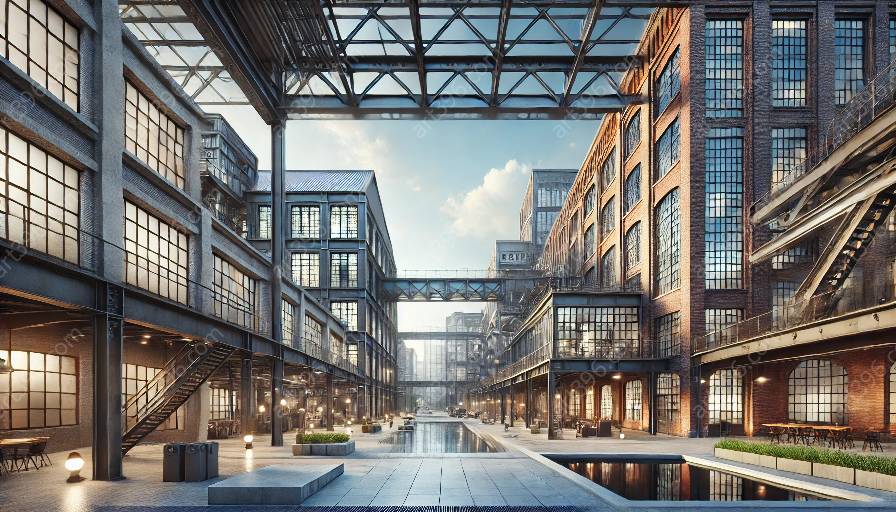Industrial architecture has played a significant role in shaping the urban landscape, with a profound impact on urban revitalization efforts. From its historical significance to its modern-day influence, industrial architecture has contributed to the transformation of urban spaces, fostering sustainable development and enhancing the overall quality of life for urban residents.
Historical Significance
The impact of industrial architecture on urban revitalization can be traced back to the Industrial Revolution, a period marked by unprecedented technological advancements and widespread urbanization. During this time, industrial architecture, characterized by its utilitarian design and robust structures, emerged as a dominant feature of urban environments. Factories, warehouses, and industrial complexes became defining elements of industrial cities, shaping their physical and social fabric.
The historical significance of industrial architecture lies in its role in driving economic growth, fostering innovation, and providing employment opportunities. These industrial structures became emblematic of urban prosperity, attracting workers from rural areas and contributing to the rapid expansion of urban centers.
Adaptive Reuse and Urban Regeneration
As the nature of industrial production evolved and urban demographics shifted, many industrial facilities fell into disuse, leaving behind vacant lots and abandoned buildings. However, the potential for adaptive reuse of industrial architecture became a catalyst for urban regeneration and revitalization initiatives.
Industrial buildings, with their large floor areas, high ceilings, and sturdy construction, presented opportunities for repurposing into mixed-use developments, creative workspaces, and cultural institutions. The adaptive reuse of these structures not only preserved their historical significance but also injected new life into urban neighborhoods, fostering a sense of community and creativity.
Integration in Urban Design
The integration of industrial architecture in urban design has become a defining feature of contemporary urban revitalization strategies. Architects and urban planners recognize the value of preserving industrial heritage while aligning it with the needs of modern urban living. The adaptive reuse of industrial buildings, along with the incorporation of industrial design elements into new developments, has contributed to the creation of dynamic, sustainable urban environments.
Industrial architecture has influenced the design of public spaces, such as parks and plazas, as well as the layout of mixed-use neighborhoods. Its rugged aesthetic and structural authenticity have become sought-after qualities in contemporary urban design, signaling a departure from conventional, sterile architectural approaches.
Social and Environmental Impact
Industrial architecture's impact on urban revitalization extends beyond the realm of aesthetics and spatial organization. The repurposing of industrial spaces has contributed to environmental sustainability by promoting the conservation of existing structures and reducing the need for new construction. Additionally, the revitalization of former industrial sites has facilitated the remediation of contaminated land, transforming brownfields into vibrant urban zones.
Moreover, industrial architecture has fostered social connections and community engagement. The adaptive reuse of industrial buildings has provided spaces for artistic expression, cultural events, and entrepreneurial endeavors, enriching the social fabric of urban neighborhoods and promoting inclusivity.
Conclusion
In conclusion, the impact of industrial architecture on urban revitalization is characterized by its historical significance, adaptive reuse potential, integration in urban design, and social and environmental impact. As cities continue to evolve and respond to shifting economic and demographic trends, industrial architecture remains a potent force in shaping vibrant, sustainable urban environments that honor the legacy of the past while embracing the opportunities of the future.





























































